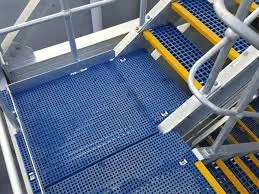
-
 Afrikaans
Afrikaans -
 Albanian
Albanian -
 Amharic
Amharic -
 Arabic
Arabic -
 Armenian
Armenian -
 Azerbaijani
Azerbaijani -
 Basque
Basque -
 Belarusian
Belarusian -
 Bengali
Bengali -
 Bosnian
Bosnian -
 Bulgarian
Bulgarian -
 Catalan
Catalan -
 Cebuano
Cebuano -
 China
China -
 China (Taiwan)
China (Taiwan) -
 Corsican
Corsican -
 Croatian
Croatian -
 Czech
Czech -
 Danish
Danish -
 Dutch
Dutch -
 English
English -
 Esperanto
Esperanto -
 Estonian
Estonian -
 Finnish
Finnish -
 French
French -
 Frisian
Frisian -
 Galician
Galician -
 Georgian
Georgian -
 German
German -
 Greek
Greek -
 Gujarati
Gujarati -
 Haitian Creole
Haitian Creole -
 hausa
hausa -
 hawaiian
hawaiian -
 Hebrew
Hebrew -
 Hindi
Hindi -
 Miao
Miao -
 Hungarian
Hungarian -
 Icelandic
Icelandic -
 igbo
igbo -
 Indonesian
Indonesian -
 irish
irish -
 Italian
Italian -
 Japanese
Japanese -
 Javanese
Javanese -
 Kannada
Kannada -
 kazakh
kazakh -
 Khmer
Khmer -
 Rwandese
Rwandese -
 Korean
Korean -
 Kurdish
Kurdish -
 Kyrgyz
Kyrgyz -
 Lao
Lao -
 Latin
Latin -
 Latvian
Latvian -
 Lithuanian
Lithuanian -
 Luxembourgish
Luxembourgish -
 Macedonian
Macedonian -
 Malgashi
Malgashi -
 Malay
Malay -
 Malayalam
Malayalam -
 Maltese
Maltese -
 Maori
Maori -
 Marathi
Marathi -
 Mongolian
Mongolian -
 Myanmar
Myanmar -
 Nepali
Nepali -
 Norwegian
Norwegian -
 Norwegian
Norwegian -
 Occitan
Occitan -
 Pashto
Pashto -
 Persian
Persian -
 Polish
Polish -
 Portuguese
Portuguese -
 Punjabi
Punjabi -
 Romanian
Romanian -
 Russian
Russian -
 Samoan
Samoan -
 Scottish Gaelic
Scottish Gaelic -
 Serbian
Serbian -
 Sesotho
Sesotho -
 Shona
Shona -
 Sindhi
Sindhi -
 Sinhala
Sinhala -
 Slovak
Slovak -
 Slovenian
Slovenian -
 Somali
Somali -
 Spanish
Spanish -
 Sundanese
Sundanese -
 Swahili
Swahili -
 Swedish
Swedish -
 Tagalog
Tagalog -
 Tajik
Tajik -
 Tamil
Tamil -
 Tatar
Tatar -
 Telugu
Telugu -
 Thai
Thai -
 Turkish
Turkish -
 Turkmen
Turkmen -
 Ukrainian
Ukrainian -
 Urdu
Urdu -
 Uighur
Uighur -
 Uzbek
Uzbek -
 Vietnamese
Vietnamese -
 Welsh
Welsh -
 Bantu
Bantu -
 Yiddish
Yiddish -
 Yoruba
Yoruba -
 Zulu
Zulu
frp insulation tank
FRP Insulation Tanks An Overview
Fiberglass Reinforced Plastic (FRP) insulation tanks have gained significant popularity in various industries due to their unique properties and advantages. This composite material, made from a plastic resin reinforced with glass fibers, combines the best of both worlds – the lightweight characteristic of plastic and the strength and durability of glass. With a growing demand for efficient storage solutions, FRP insulation tanks are increasingly utilized for the storage of various liquids, including chemicals, water, and fuel.
FRP Insulation Tanks An Overview
Additionally, FRP insulation tanks are resistant to corrosion, which is a significant concern in many industrial applications. Traditional storage tanks made from metal or concrete can often succumb to corrosion over time due to exposure to harsh chemicals or environmental conditions. In contrast, FRP tanks offer superior resistance to various corrosive substances, leading to a longer lifespan and reduced maintenance costs. This durability not only ensures the safety of the stored materials but also minimizes the need for regular replacements.
frp insulation tank

The lightweight nature of FRP insulation tanks is another major advantage. Unlike metal tanks, which can be extremely heavy and cumbersome, FRP tanks can be easily handled, transported, and installed. This property significantly reduces the labor costs related to installation and maintenance. Moreover, the ease of installation is further enhanced by the fact that FRP tanks can be manufactured to suit various sizes and shapes, accommodating specific spatial and storage requirements.
Moreover, FRP insulation tanks are customizable. Manufacturers can design tanks that cater to the specific needs of a client, including size, shape, and type of insulation. This flexibility allows businesses in diverse sectors to have storage solutions that fit their unique operational demands. For example, in industries that require strict compliance with safety and environmental regulations, FRP tanks can be engineered to include fail-safe mechanisms and additional safety features.
Another noteworthy aspect of FRP insulation tanks is their environmental stability. They are not only designed to last for many years but are also produced with sustainability in mind. The use of FRP materials often reduces the carbon footprint associated with production compared to traditional materials, contributing to a greener, more eco-friendly industrial solution.
In conclusion, FRP insulation tanks represent a significant advancement in storage technology. With their superior insulation properties, corrosion resistance, lightweight design, and customization options, they are highly suitable for a wide range of applications. Industries looking for reliable, efficient, and sustainable storage solutions will find that FRP insulation tanks meet and exceed their needs. As businesses continue to evolve, the demand for innovative solutions like FRP insulation tanks will undoubtedly increase, making them a staple in industrial storage applications.









